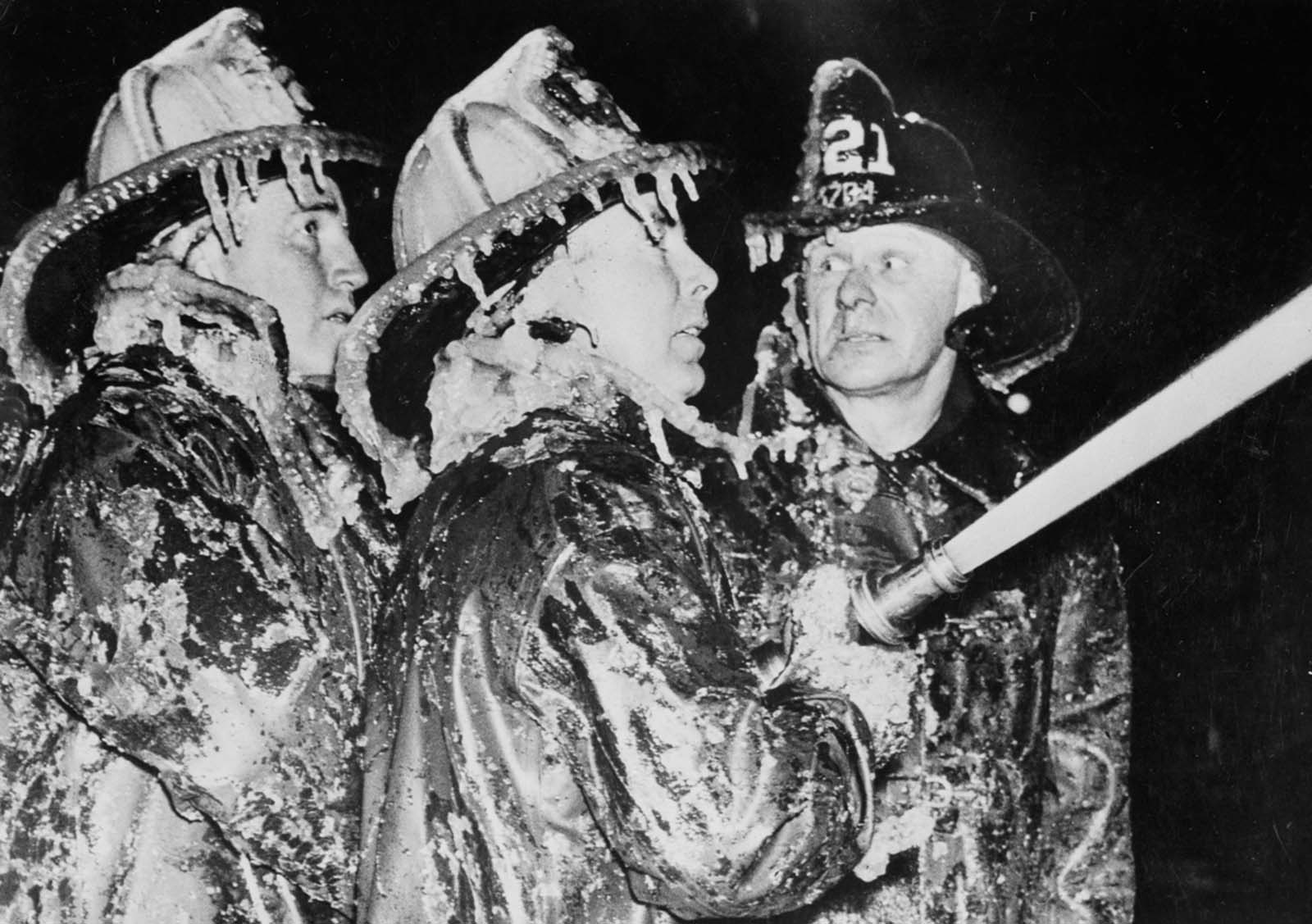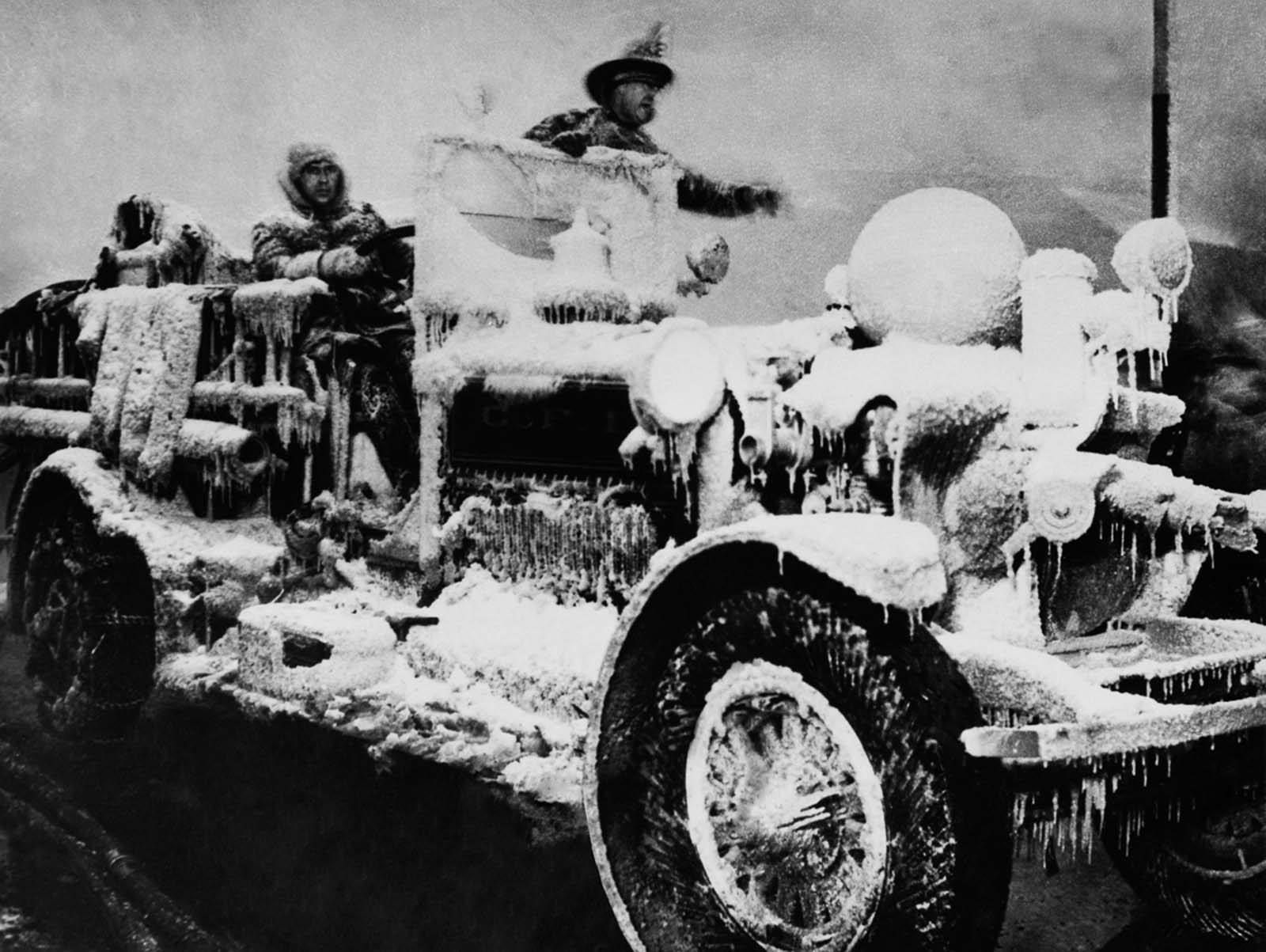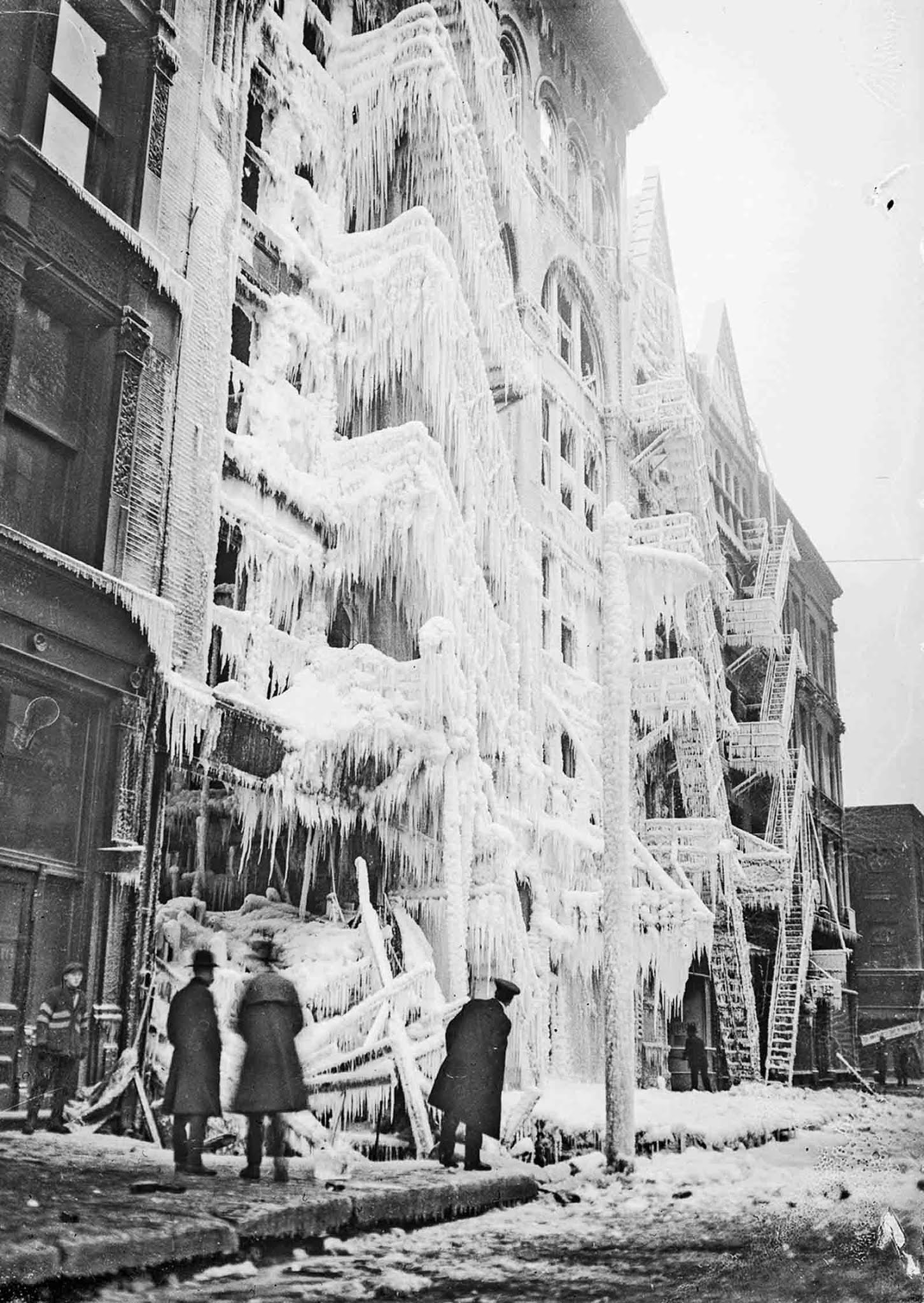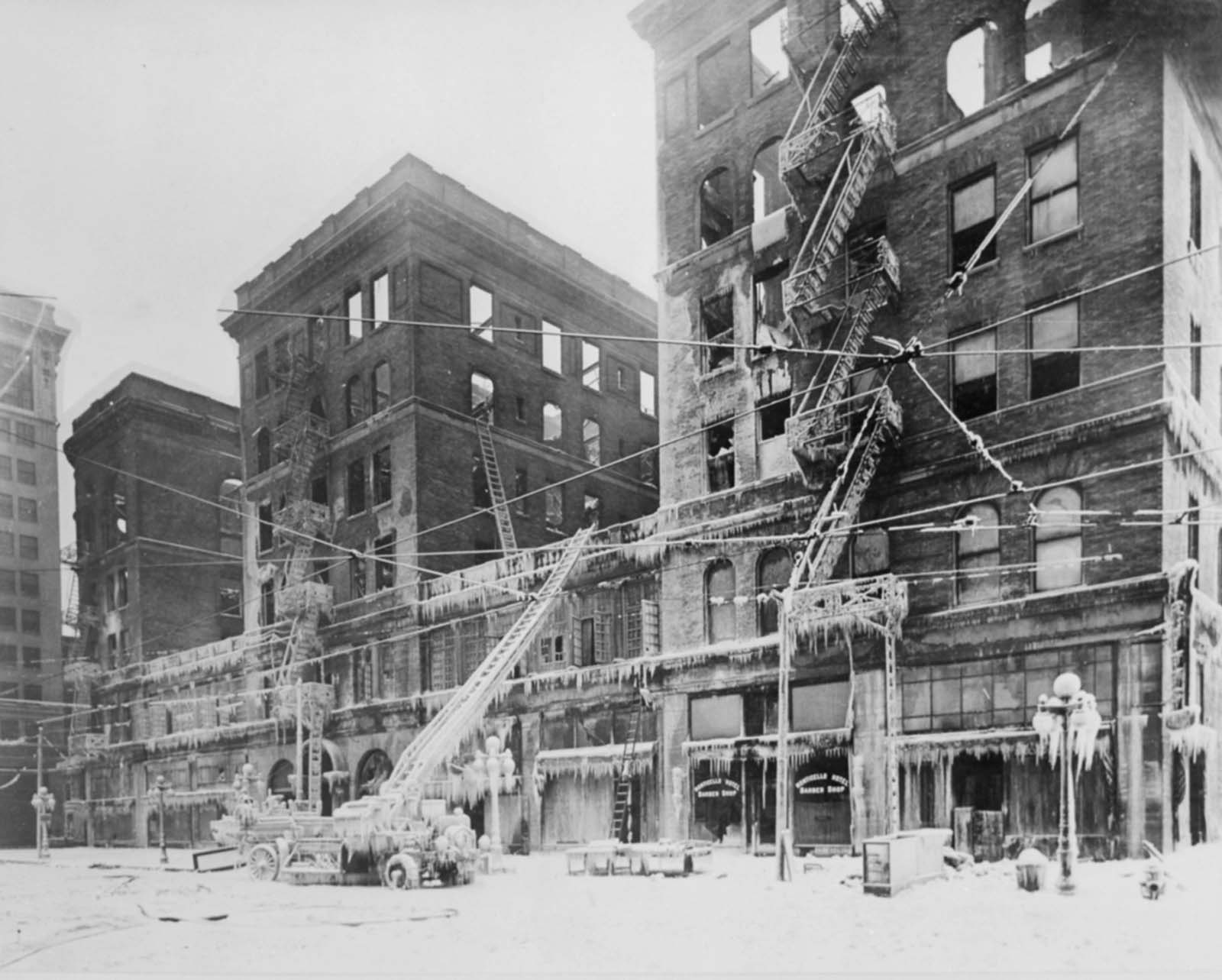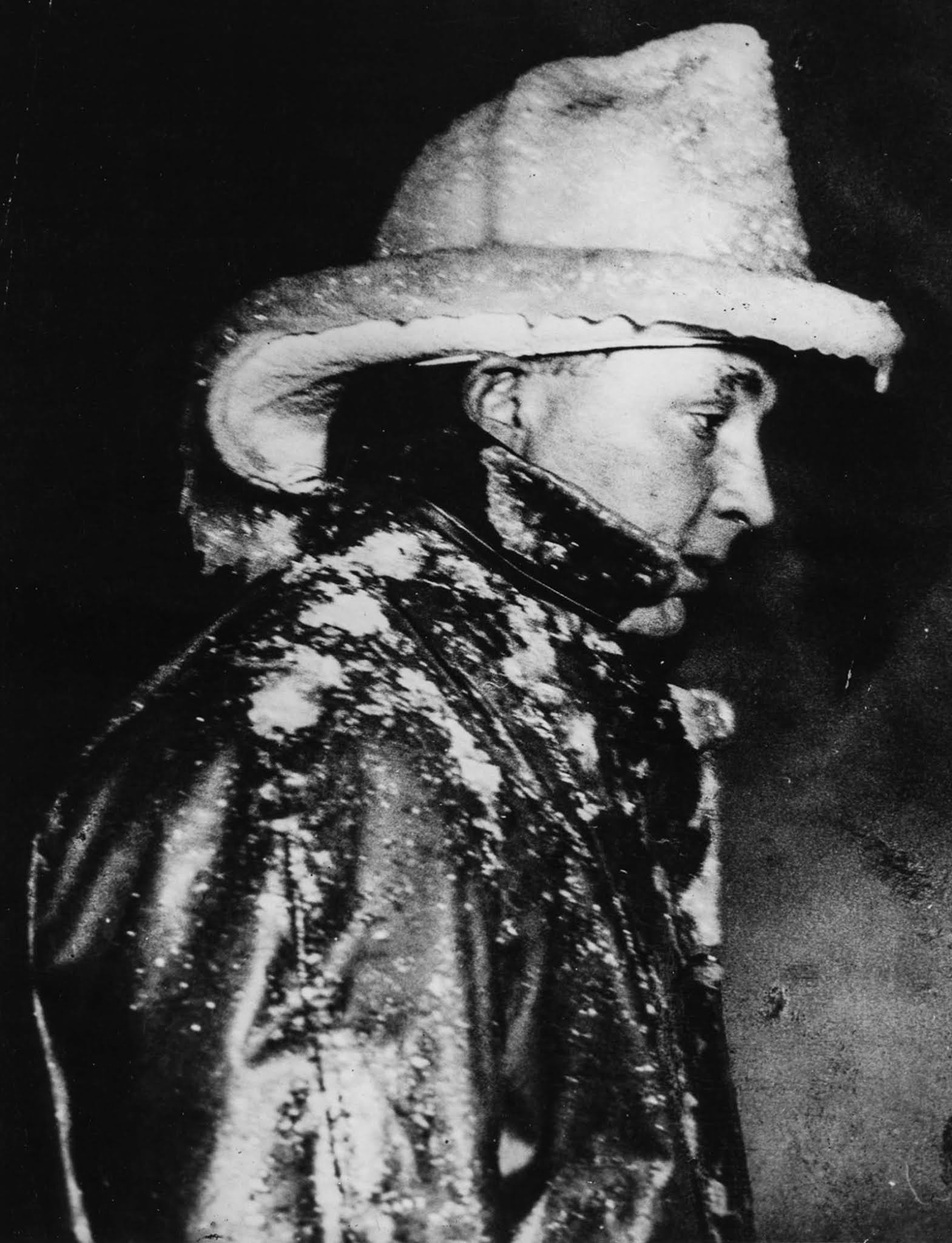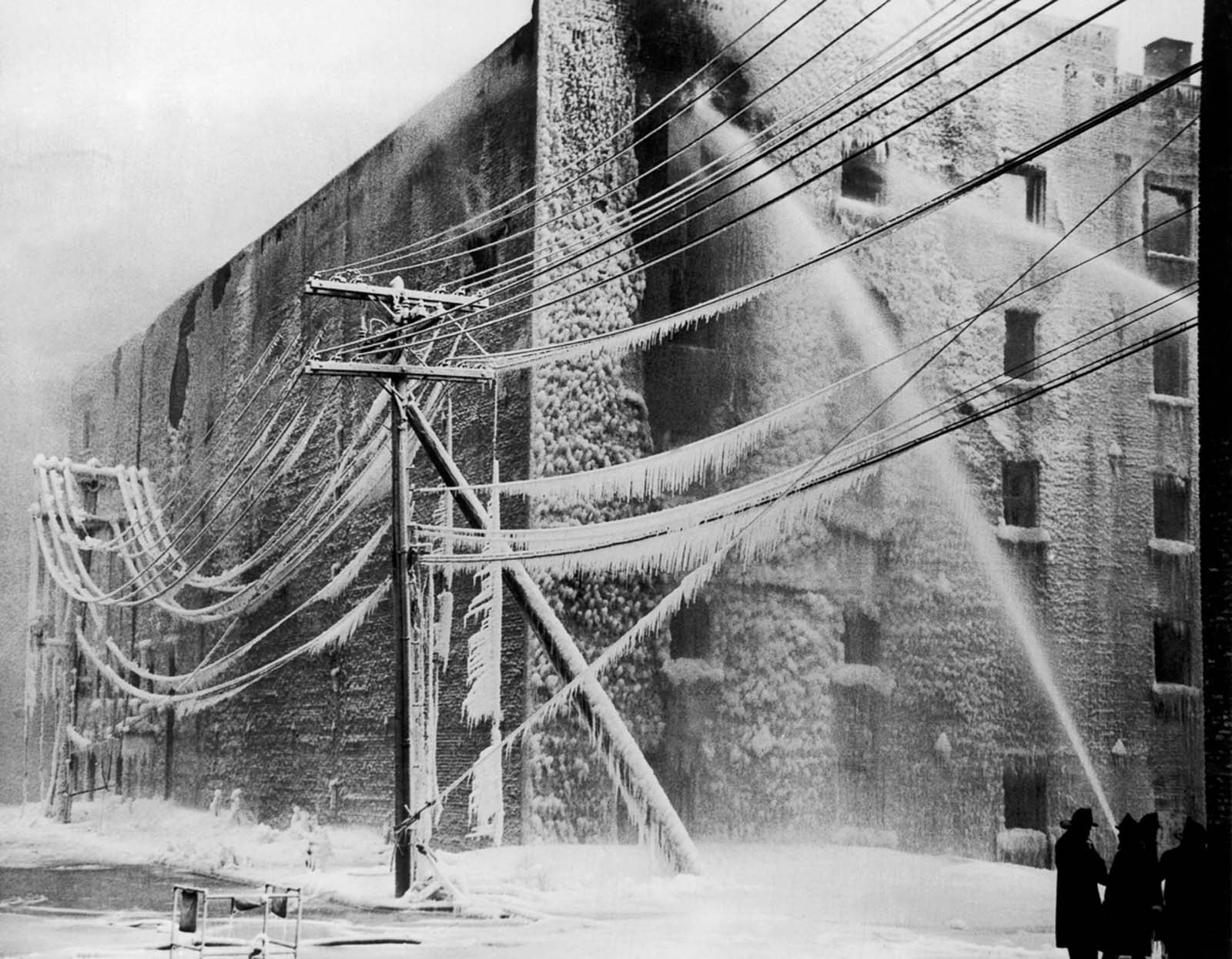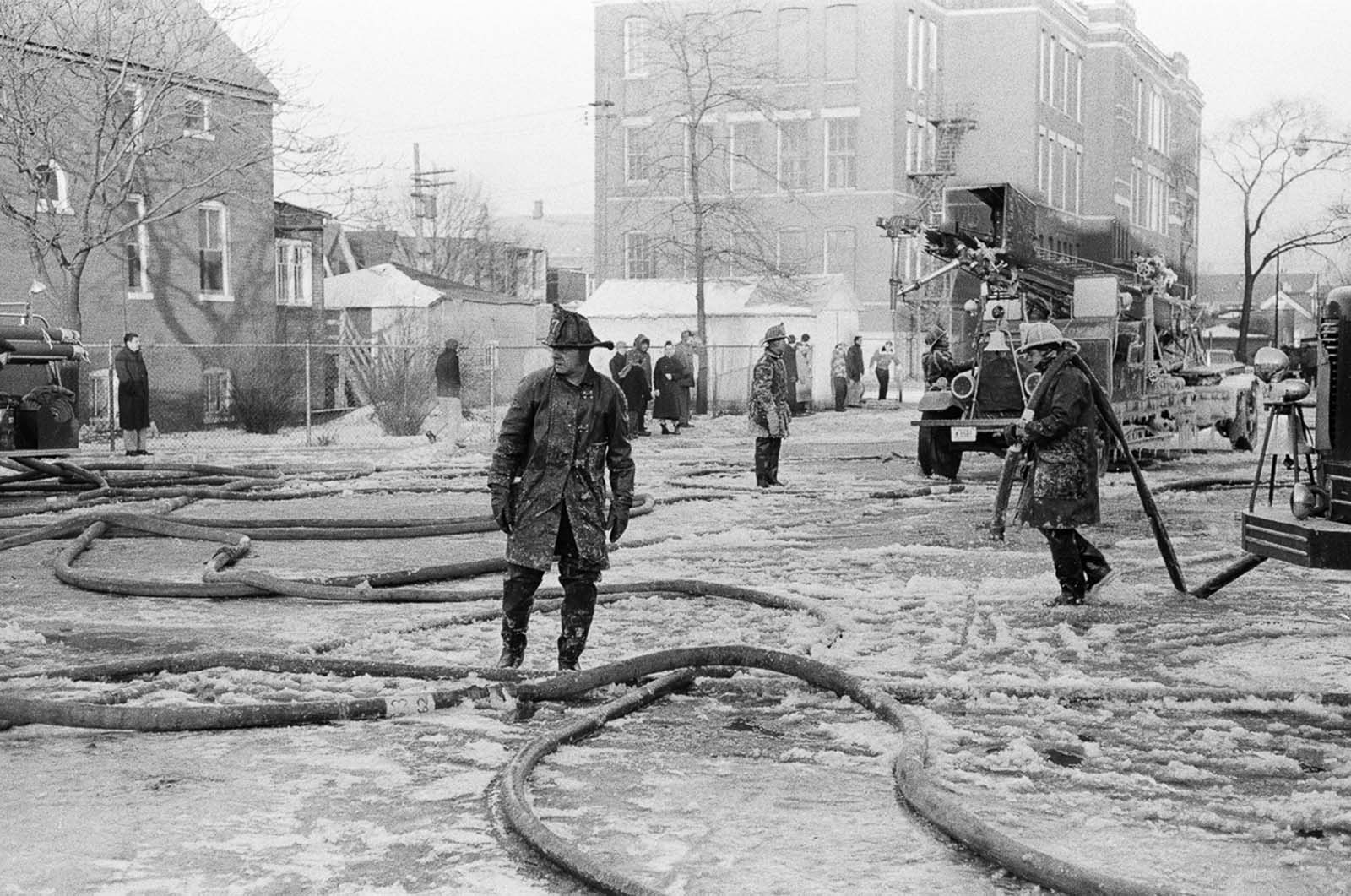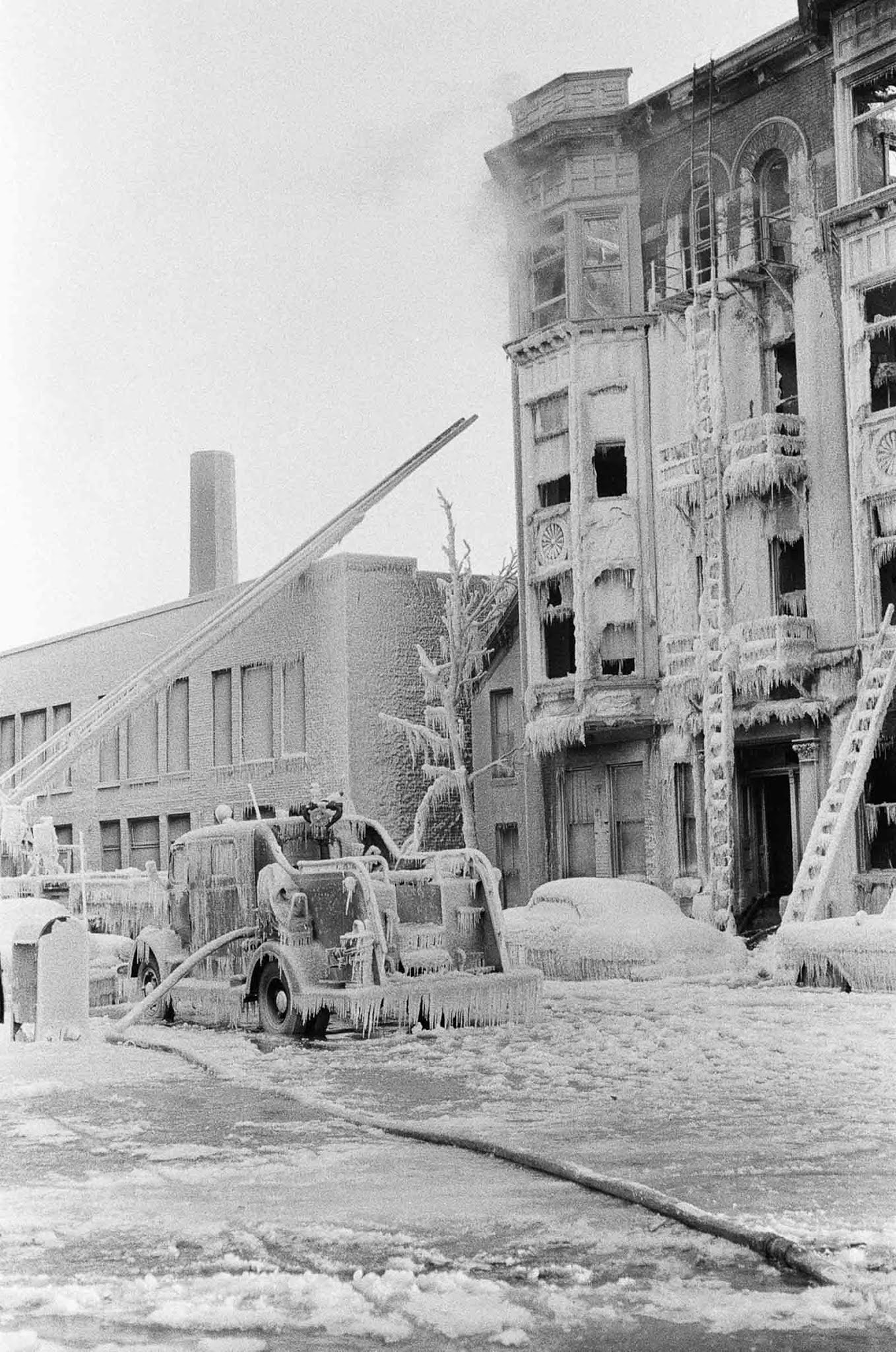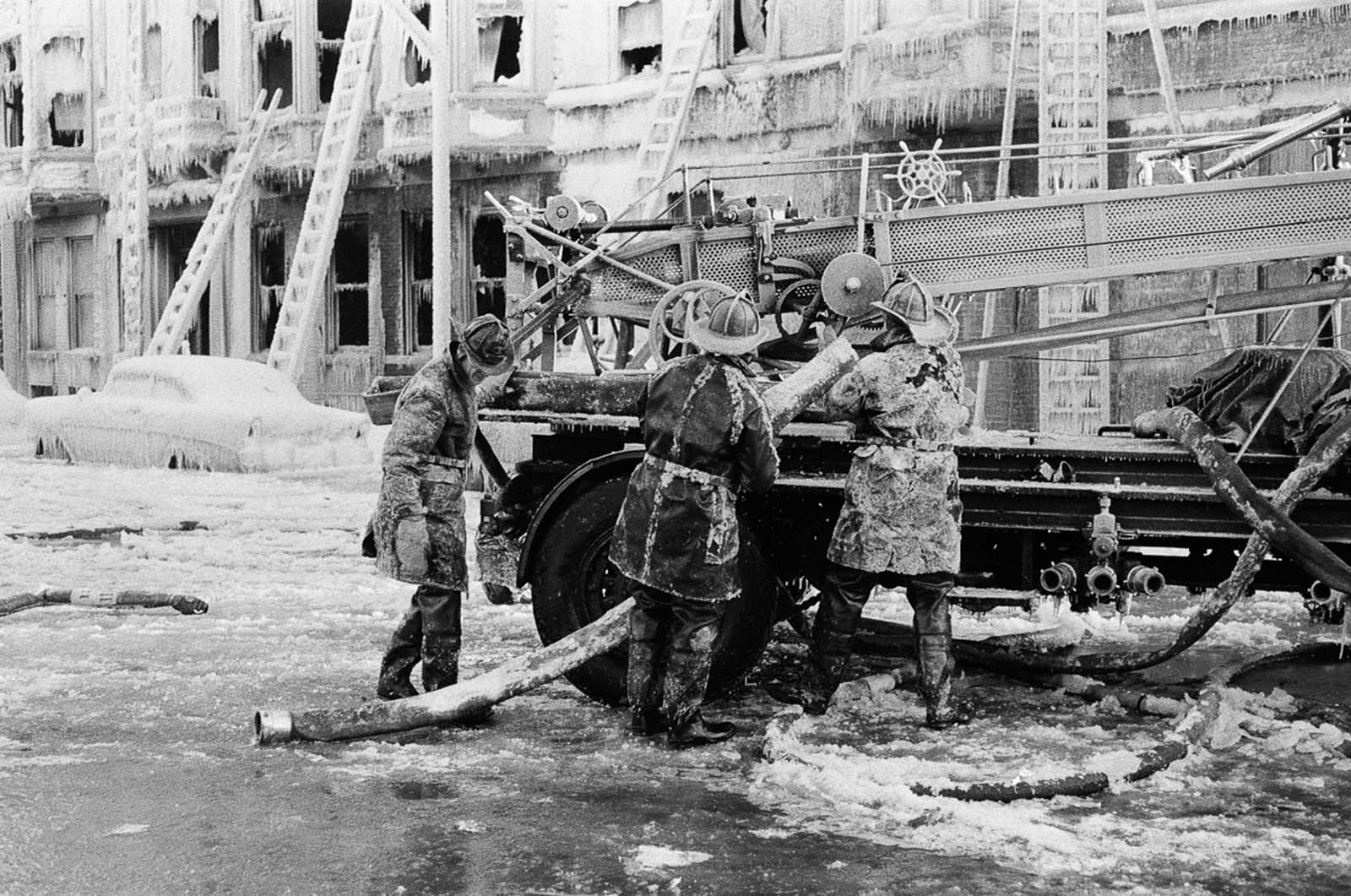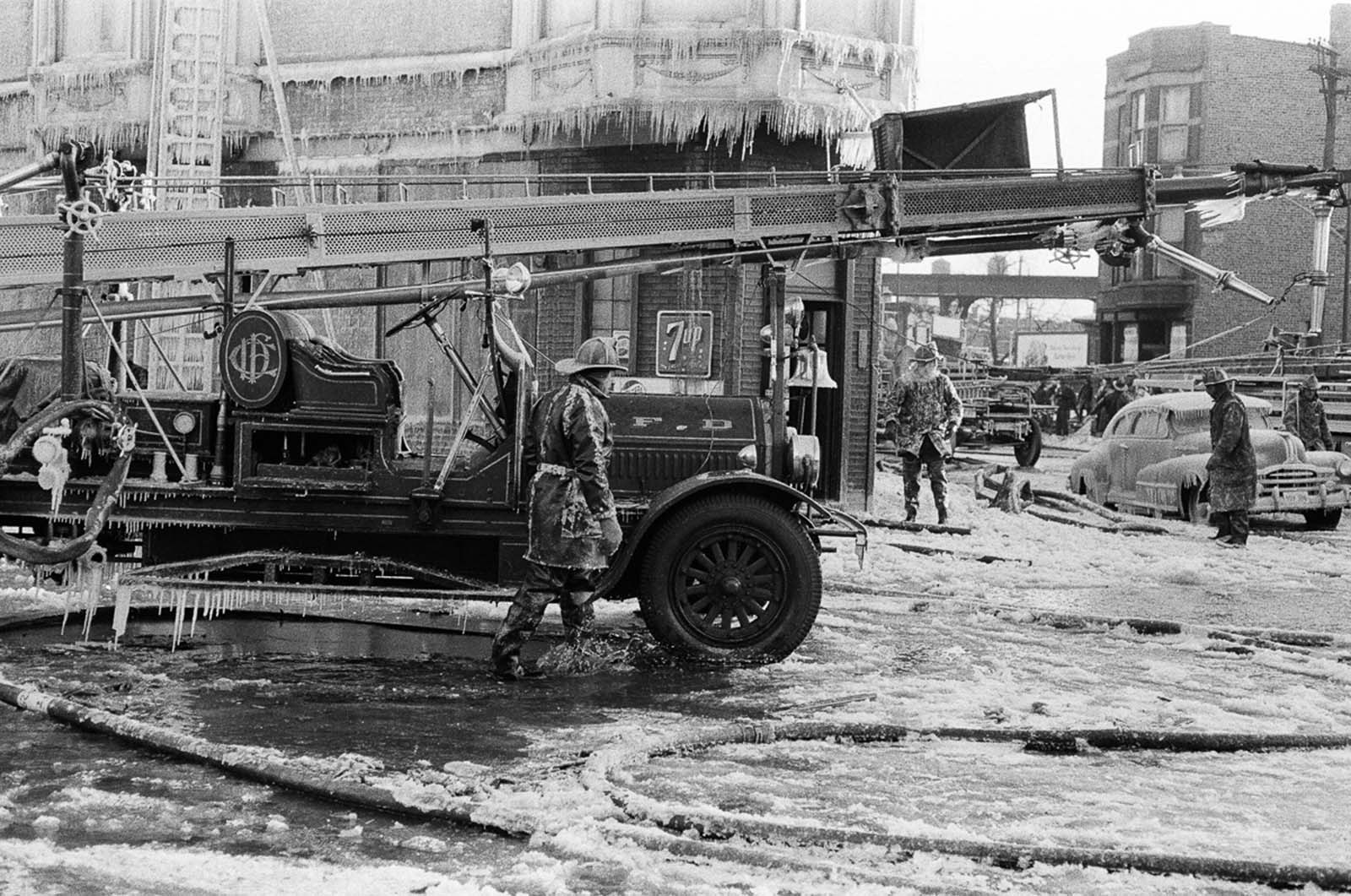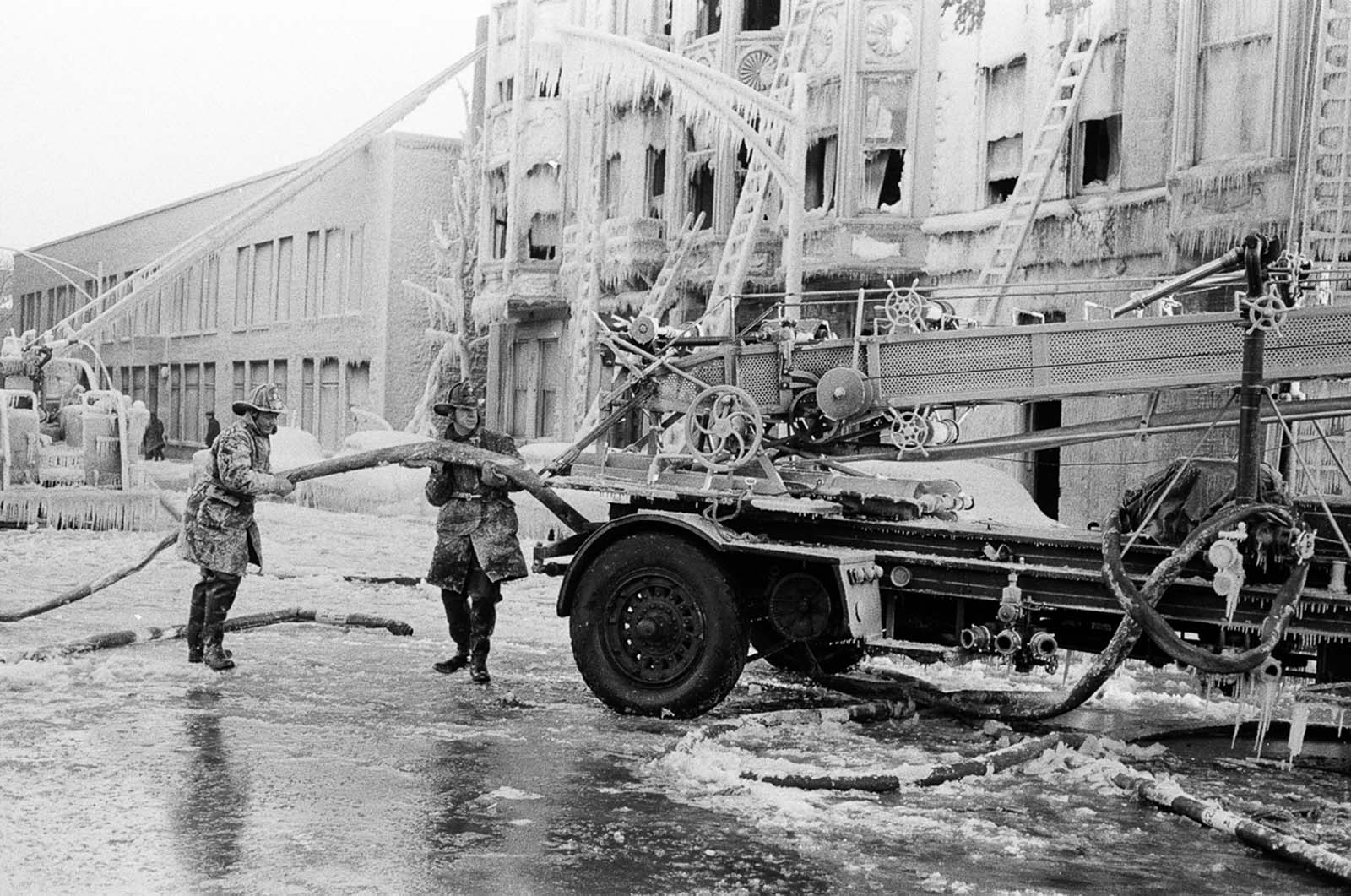Everything moves slower in extreme cold. Apparatus slows down from poor road conditions, firefighters move slower on snowpack and ice and when advancing lines, and hitting fire hydrants is tougher. Water can freeze on the inside and outside of hoses, rendering them unusable. Even the hydrants can be buried under the snowdrifts. Firefighters typically need protection from both heat and cold at the same incident. They’re exposed to the cold while responding and setting up, and then they may encounter extreme heat while fighting the fire. Adding layers of clothing to provide extra insulation from the cold adds weight and bulk, restricting mobility and requiring additional physical effort to perform simple tasks. Firefighters who are dressed for the cold are likely to become fatigued. It’s common for a firefighter to be drenched in sweat on the inside and covered with ice on the outside. In this article, we’ve collected a few rare historical photographs of firefighters battling fires in extreme winter conditions. (Photo credit: Library of Congress / Keystone / Gamma / Getty Images). Notify me of new posts by email.
Δ Subscribe
